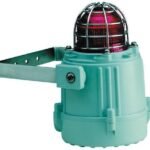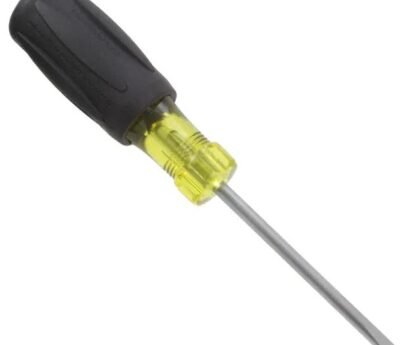Explosion-proof LED lighting is a type of lighting that is designed to be used in hazardous environments, where there is a risk of explosion or fire. These lights are specially designed to contain any sparks or explosions within the fixture, so they don’t cause any harm to the surrounding area or people.
Explosion-proof LED lighting is becoming increasingly popular in industries such as oil and gas, chemical manufacturing, and mining, where hazardous materials are commonly used. These lights are designed to meet the strict safety standards set by the National Electric Code (NEC) and the International Electrotechnical Commission (IEC).
The Benefits of Explosion-Proof LED Lighting
There are several benefits of using explosion-proof LED lighting in hazardous environments. Here are some of the key advantages:
- Increased Safety: The primary benefit of explosion-proof LED lighting is increased safety. These lights are designed to prevent sparks or explosions from escaping the fixture, which reduces the risk of fire or explosion in hazardous environments. This makes them a safer option compared to traditional lighting fixtures, which can pose a significant risk in these environments.
- Energy Efficiency: LED lights are known for their energy efficiency, and this is no different for explosion-proof LED lighting. They use significantly less energy than traditional lighting fixtures, which can help reduce energy costs in hazardous environments. Additionally, they have a longer lifespan, which means they need to be replaced less frequently, further reducing maintenance costs.
- Durability: Explosion-proof LED lighting is designed to be highly durable and withstand harsh environments. They are often made from materials such as aluminum, which is lightweight and resistant to corrosion. This means that they are less likely to be damaged by the elements or wear and tear.
- Improved Lighting: LED lights are known for their high-quality lighting, and this is no different for explosion-proof LED lighting. They provide bright and consistent lighting, which can help improve visibility in hazardous environments. This can reduce the risk of accidents or injuries, as workers are able to see what they are doing more clearly.
- Environmentally Friendly: LED lights are environmentally friendly, as they do not contain any hazardous materials such as mercury. They are also recyclable, which means they can be reused or repurposed once they reach the end of their lifespan. This makes them a sustainable option for hazardous environments.
Types of Explosion-Proof LED Lighting
There are several types of explosion-proof LED lighting that are designed for different environments and applications. Here are some of the most common types:
- Floodlights: Floodlights are designed to provide wide-angle lighting and are often used to illuminate large areas such as outdoor workspaces or construction sites.
- High Bay Lighting: High bay lighting is designed to provide bright lighting in large indoor spaces such as warehouses or manufacturing facilities.
- Low Bay Lighting: Low bay lighting is designed to provide bright lighting in smaller indoor spaces such as workshops or garages.
- Emergency Lighting: Emergency lighting is designed to provide lighting in the event of a power outage or emergency situation. They are often used in areas where workers need to be able to see in order to evacuate safely.
Considerations When Choosing Explosion-Proof LED Lighting
When selecting explosion-proof LED lighting for hazardous environments, there are several factors to consider. Here are some of the most important considerations:
- Certification: The certification of the lighting is one of the most crucial considerations when choosing explosion-proof LED lighting. It’s essential to select lighting that is certified by the appropriate organizations, such as the National Electric Code (NEC) and the International Electrotechnical Commission (IEC). This certification ensures that the lighting meets the safety standards required for use in hazardous environments.
- Hazardous Environment Classification: It’s crucial to choose explosion-proof LED lighting that is designed for the specific classification of the hazardous environment where it will be used. Different hazardous environments require different levels of protection, and the lighting must be certified for use in that particular classification. This means understanding the classification of the environment, such as the presence of flammable gases or combustible dust, and choosing the right lighting that is certified for that specific classification.
- Brightness and Lighting Quality: The brightness and quality of the lighting is another key consideration when choosing explosion-proof LED lighting. It’s important to choose lighting that provides bright and consistent lighting, and that is suitable for the specific needs of the hazardous environment. For instance, high bay lighting may be needed for large indoor spaces, while floodlights may be required for outdoor areas. The lighting should be tested and proven to work in the environment where it will be used.
- Energy Efficiency: Energy efficiency is also an important consideration when choosing explosion-proof LED lighting. LED lighting is already known for its energy efficiency, but it’s still essential to consider how much energy the lighting will consume in the hazardous environment. Lower energy consumption will result in lower operating costs, as well as a reduced carbon footprint. Additionally, lighting that has a longer lifespan will also reduce maintenance and replacement costs.
- Durability: The durability of the lighting is another key consideration. Explosion-proof LED lighting is designed to be durable and resistant to damage, but it’s still important to consider how well the lighting will stand up to the harsh conditions of the hazardous environment. Factors to consider include the materials used to construct the lighting, such as aluminum, which is lightweight and corrosion-resistant.
- Maintenance and Support: Maintenance and support are other important factors to consider when choosing explosion-proof LED lighting. It’s crucial to select lighting that requires minimal maintenance and has a long lifespan. Additionally, it’s important to choose lighting that comes with adequate support, such as a manufacturer’s warranty or a support team that can help with any issues that may arise.
In summary, when choosing explosion-proof LED lighting for hazardous environments, it’s essential to consider certification, hazardous environment classification, brightness and lighting quality, energy efficiency, durability, and maintenance and support. By carefully evaluating these factors, you can select the right lighting that provides the necessary protection and illumination for your hazardous environment while minimizing operating costs and environmental impact.



